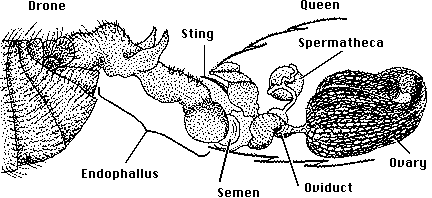
The Dating Game: A Look at Reproduction
Swarming
A honeybee colony reproduces by swarming. Before swarming a colony rears additional queens. When these future queens are in the pupal stage the old queen and a portion of workers flies off to begin a new colony. This group will find a suitable home and begin building comb and rearing brood. One young queen remains in the parent colony to maintain the integrity of the hive. The other young queens that were produced join other swarms and settle elsewhere. This brings us to the act of mating.

Mating Flights
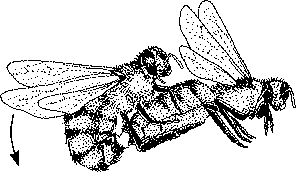
When a drone is one to two weeks old it takes its first mating flight. These flights can last between 10 to 55 minutes in comparison to the virgin queens who keep their flight to within 5 to 20 minutes. If the afternoon is warm and sunny with slight wind, approximately 20 km/h, then the conditions are ideal and the mating flights can occur. Unlike human society it is common and therefore not unusual for a virgin queen to mate up to ten times in a single session. If she acquired enough sperm in her spermtheca, sperm holder, then she has successfully mated. If she has insufficient sperm then she continues her mating flight on the next "nice" day. The mating is very quick and very violent. The male drone suffers a penalty in "the dating game".
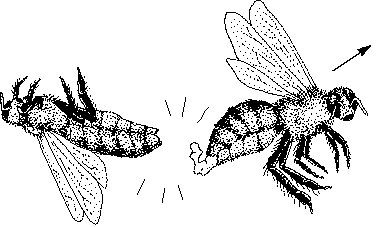
As the male mates he everts his penis into the open sting chamber of the queen. The queen then breaks off the penis when the male releases her. This seemingly cruel and unusual punishment is not as inhibiting to the male as you would first suspect. The male, now accomplished in mating, has served his purpose of life and dies. Only drones who have not successfully mated return back to the hive to await another day of mating flights.
Congregation Areas
Should the drone be unsuccessful and return back to the "battlefield" he may often be found in what is known as a congregation area. These areas are often used for several years in succession and occur primarily in areas of hills or mountains. Unfortunately the mechanisms and factors involved in this behaviour is not fully understood. The great thing about congregation areas for the bees is the fact that they allow for greater genetic variation among the hives. This occurs simply due to the fact that the congregations are composed of groups of bees from a total area of over 520 km2. The further a queen mates from the hive the more genetic variation she is likely adding to the hive.
Mating Progress
Studies of the mating process have been undertaken with some rather interesting results. Studies have shown that queens suspended by helium balloons 6 to 15 metres above ground are the most attractive to the drones. Wind speed is assumed a factor as that varies greatly with altitude. A virgin queen produces an odour from her mandibular gland that can be detected by a potential mate up to 50 metres away. The antennae of the drone sense the signal in the air. A swarm of bees develops under the virgin female upon secreting the odour. Hundreds of drones can be seen hovering under the queen. When a drone gets to within one metre he can now see the queen. Before attempting to mate she is examined using antennae and forelegs.
Interestingly enough the queen's mandibular gland secretion of all species of bees under the genus Apis attract the A. mellifera drones. To be scientific the pheromone produced is specifically 9-oxo-trans-2-decenoic acid. The interesting thing about this compound is that it has two different functions depending on the situation. Inside the nest the pheromone helps to inhibit the drones from trying to reproduce with the queen. Outside the nest the pheromone encourages reproduction by acting as an aphrodisiac in stimulating mounting and copulation.
 Bee-home Again |
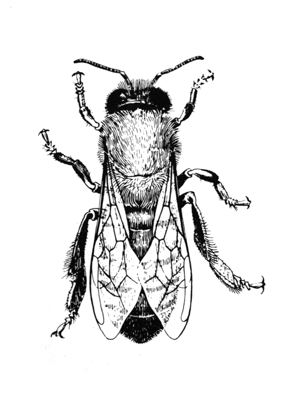 Colony: Division of Labour |
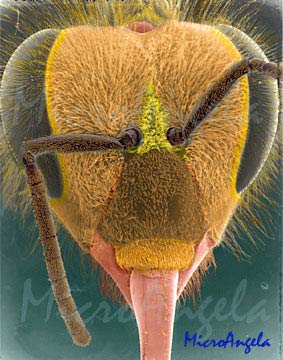 Defensive Mechanisms |
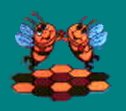 Dances with Bees |
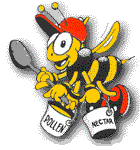 Foraging |